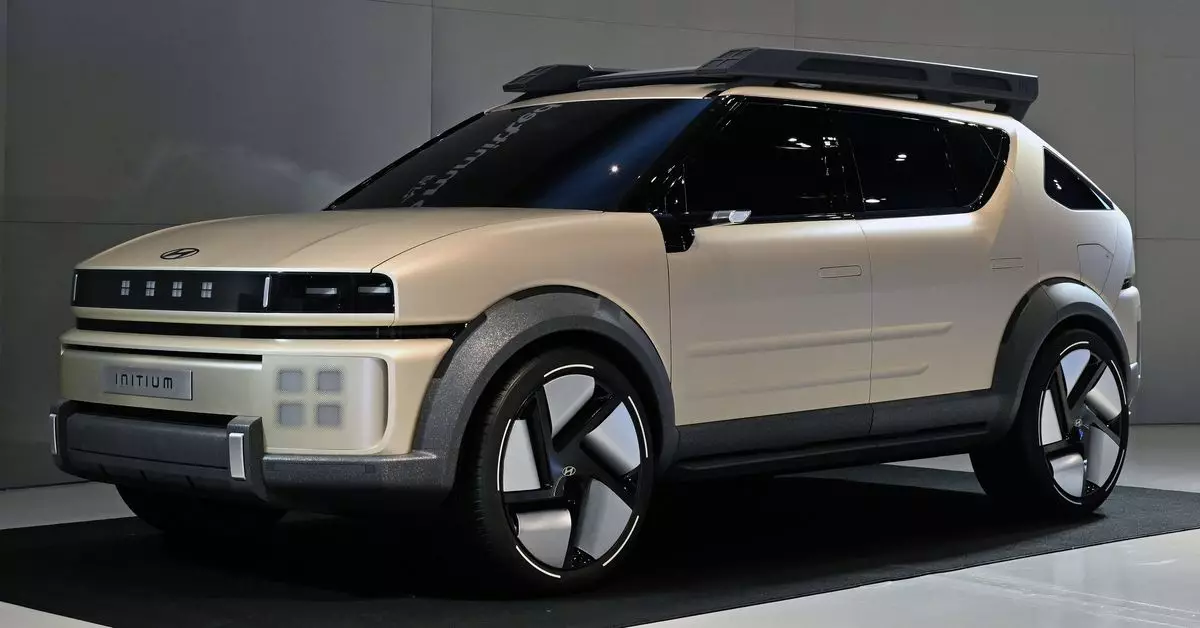Hyundai is venturing into the realm of hydrogen fuel cell electric vehicles (FCEVs), signaling a commitment to sustainable mobility that extends beyond conventional electric vehicles. Recent developments reveal the brand’s “Art of Steel” design language, showcased prominently in their new Initium concept SUV. This model is a bold move for Hyundai, as it seeks to establish a visually appealing identity for hydrogen vehicles, which have often been viewed as utilitarian or unattractive. The Initium draws on a blend of sharp angles and retro aesthetics reminiscent of Hyundai’s previous innovative concepts, such as the N Vision 74. This forward-thinking design not only highlights the company’s ambition but also reflects a modern interpretation of automotive aesthetics, proving that sustainability does not have to compromise style.
One of the standout features of the Initium is its impressive driving range. Hyundai estimates that the vehicle can travel over 400 miles (650 km) on a single refuel, representing a leap forward from its existing Nexo model. This enhanced capability positions the Initium as a competitive option in the burgeoning market of FCEVs. The expectation is that the vehicle will not only attract eco-conscious consumers but also those who prioritize range and performance in their vehicles. As Hyundai continues to refine its hydrogen technology, the Initium serves as a tantalizing preview of a fully realized hydrogen-powered future, which is expected to materialize in the form of production models in the next year.
Hyundai’s strategy places hydrogen at the forefront of its long-term sustainability objectives. The automaker has set an ambitious target of achieving carbon neutrality by 2050, a goal that hinges significantly on the integration of hydrogen technology across its product lines. From passenger vehicles to commercial trucks and buses, the company envisions a future where hydrogen plays a vital role in reducing reliance on fossil fuels. This broad application of hydrogen is encapsulated in Hyundai’s “HTWO” initiative, signaling a robust commitment to expanding hydrogen use beyond personal transport.
Despite the promise of hydrogen fuel cells, several challenges remain. The distribution and infrastructure for hydrogen fuel are considerably less developed compared to the rapidly expanding electric vehicle charging networks. Building a comprehensive hydrogen refueling infrastructure is critical to the success of hydrogen vehicles, and it is an area where automakers, governments, and stakeholders must collaborate. History has shown that while hydrogen is abundant and offers a clean alternative to conventional fuels, the logistical challenges of storage and transportation are significant hurdles that need addressing.
As Hyundai ventures deeper into the hydrogen landscape, the Initium concept SUV not only marks a pivotal moment in the company’s design journey but also represents a broader vision for sustainable mobility. The integration of compelling design with advanced technology can attract a new generation of environmentally-conscious consumers. This balancing act between aesthetics and functionality is essential as the automotive industry moves towards a greener future. The stakes are high, and in a rapidly evolving market, Hyundai’s ambitious approach could potentially redefine the perception and adoption of hydrogen-powered vehicles.

